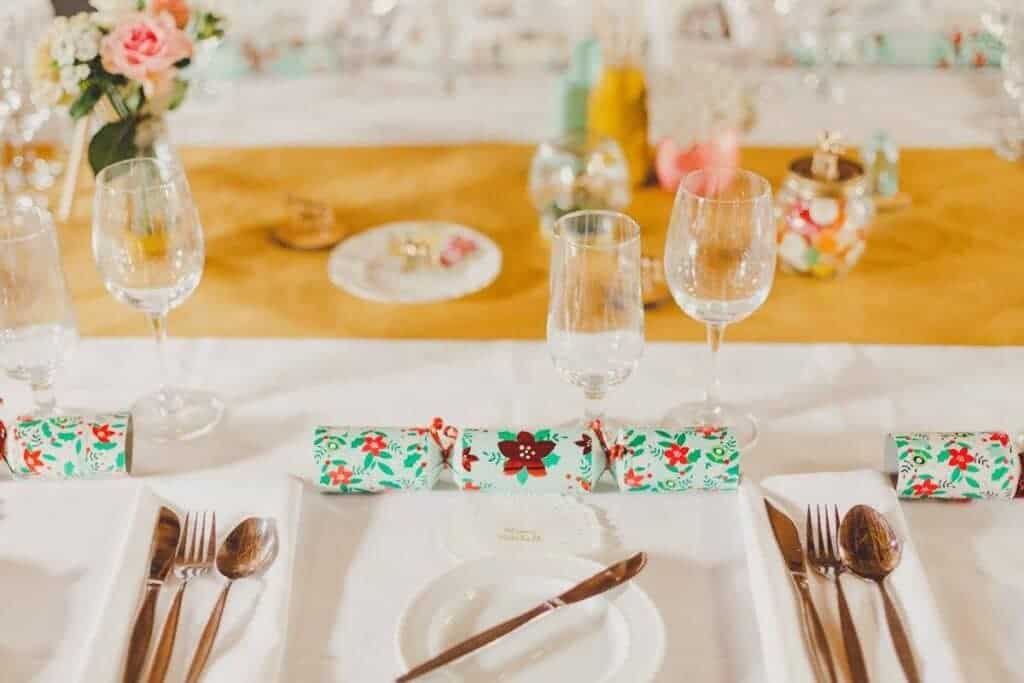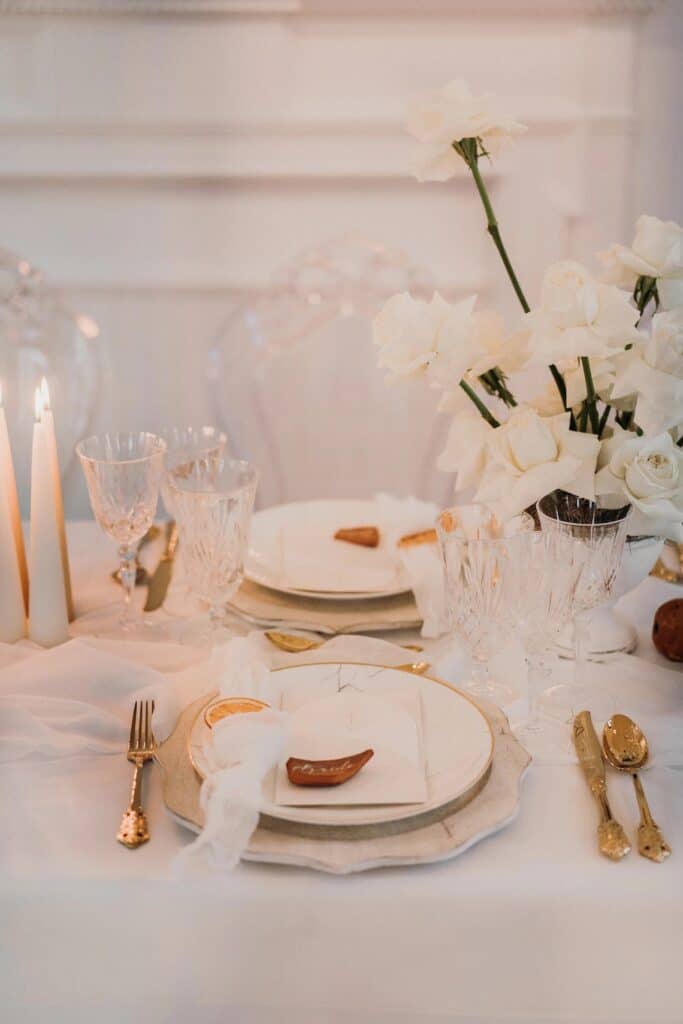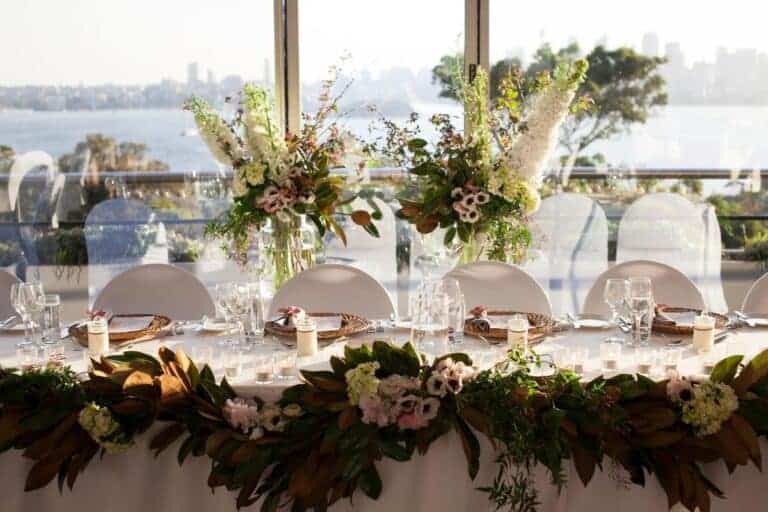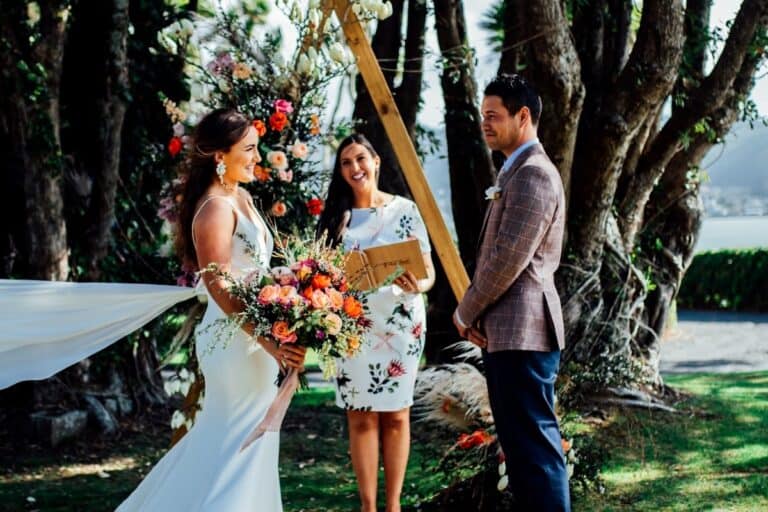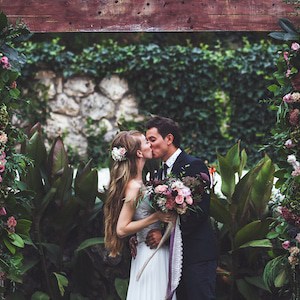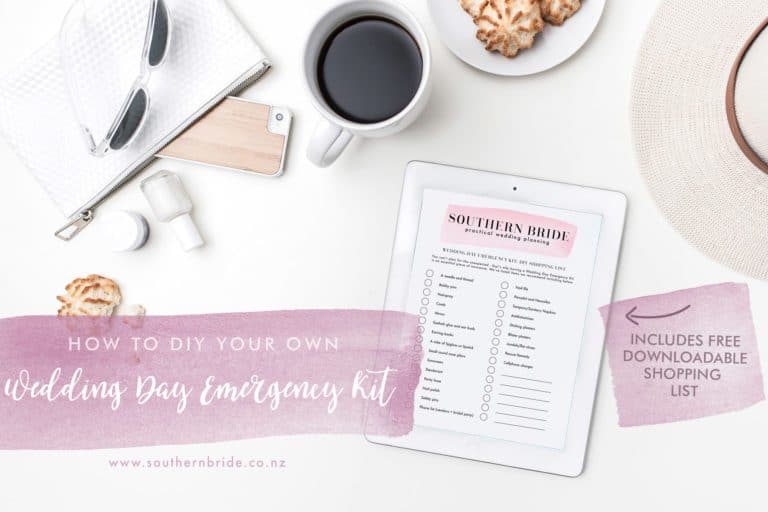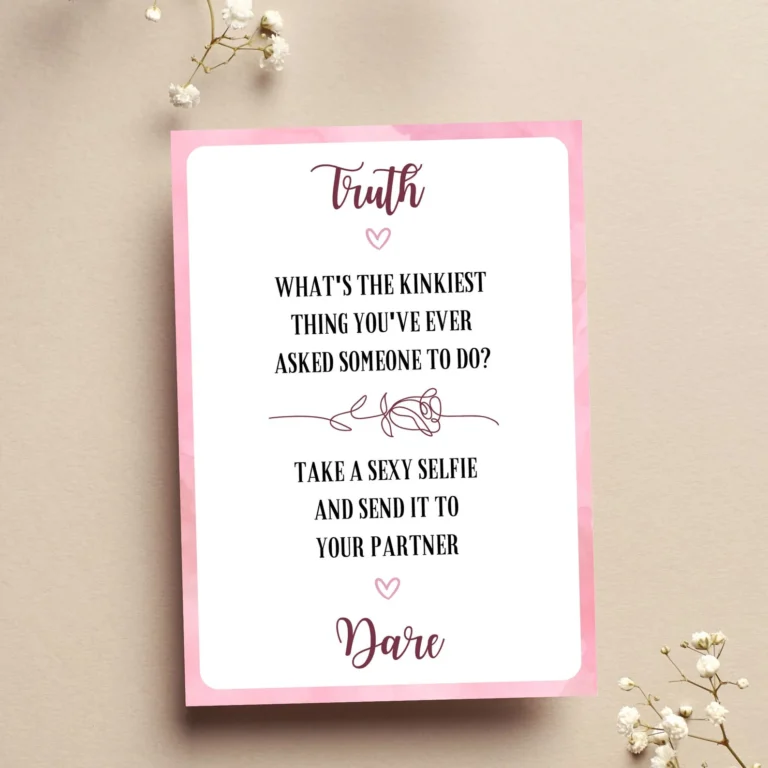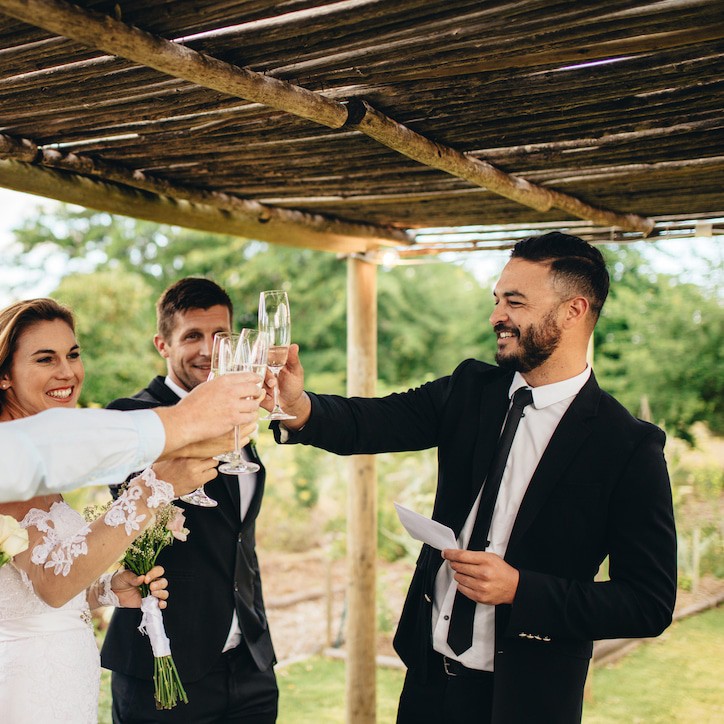Seating For Your Wedding Dinner – 3 Options
Seating at your wedding dinner can be organized in 3 ways; assigned seats, assigned tables, or unassigned seating. Which is right for your wedding?
The main point of a wedding assigned wedding seats is obviously to let your guests know where they will be sitting for dinner. If you have a large wedding with many guests, assigned seating or a chart can avoid chaos and confusion between your guests as they search for a space to sit.
A smooth wedding timeline runs on a tight ship, so you want to avoid things running behind because no one knows where they are sitting!
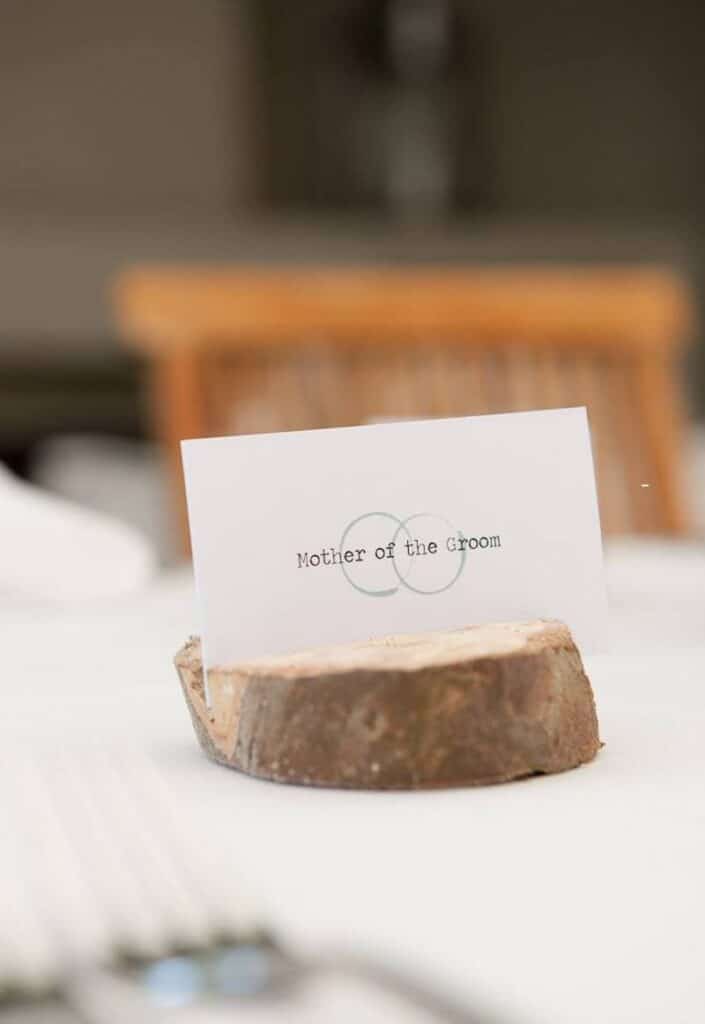
If you’re only hosting a small wedding with say 20 or fewer guests, you might be fine to leave the seating unassigned. But for weddings any larger than that, it can really make a difference!
Before deciding what’s right for your wedding, let’s dive into the different seating options and the pros and cons for each.
Assigned seats
Assigned seats are when each individual seat is assigned to a specific guest. Assigning each guest a seat means you can choose exactly who you want them to sit (or not sit) next to. If there are certain family members that don’t get along, for example, assigned seating means you can avoid any awkward moments there.
Assigned seating is often used when the wedding meal is a plated meal as opposed to a buffet. Guests’ seats can be marked by place cards, and these cards can have their meal choice on them. That way, the servers know where to bring each plate.
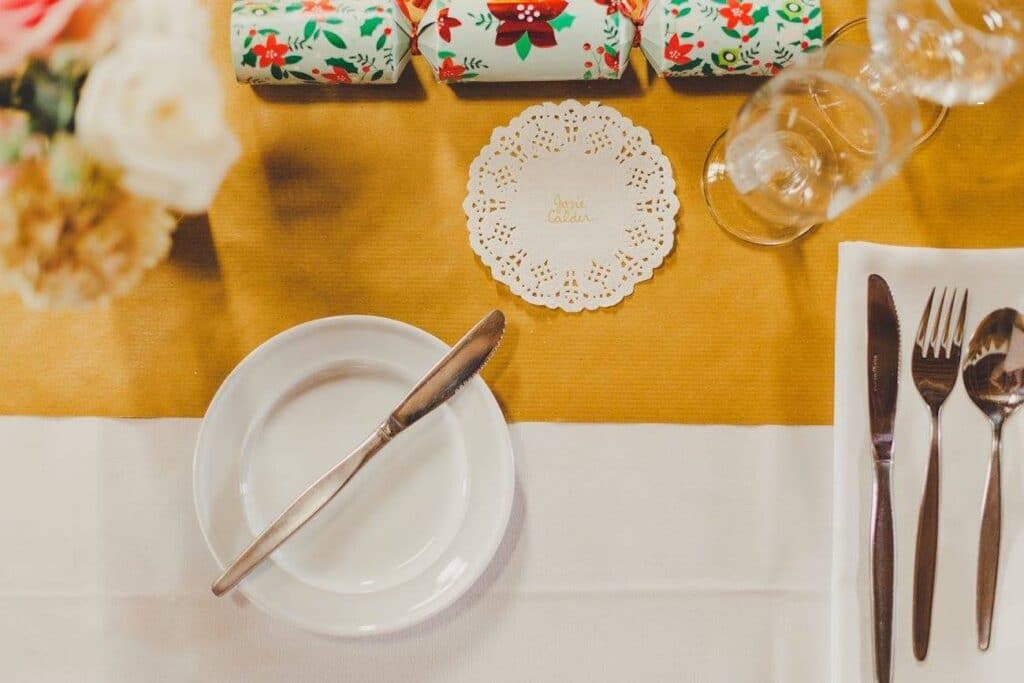
Assigned tables
Assigned tables are a bit less formal than assigned seating. Guests are assigned a table number, but once at their table, they can choose where they want to sit.
This still gives you some choice on who you seat together at each table, but it’s not as rigorously organized as assigned seating.
This style of seating is perfect for a buffet dinner or a family-style dinner.
Unassigned seating
This is when there is no seating arrangement and guests can choose where they sit and at which table. This can work for a small and intimate wedding but it can be a bit more tricky for larger weddings.
If you are choosing unassigned seating, it pays to set extra tables. People have tendencies to leave a space between them when they sit next to someone they don’t know.
How to show guests where they are sitting
There are three ways to show guests where they are sitting, though you can use a combination of any of the three.
Escort cards
Escort cards are name cards with the guest’s name and often also which table they are sitting at. An escort card lets them choose their seat at their specific table and who they sit next to. This makes them perfect for more informal weddings. Escort cards are grouped near your reception’s entry point.
Escort cards are a great way for the wedding couple to express their creativity and coordinate with their wedding theme. From wine corks to wood The options are unlimited when it comes to presenting these cards.
Escort cards sit near the seating plan or can be used as a replacement for the seating plan if they have the table numbers on them. Organize escort cards alphabetically by the last name so guests can find them easily.
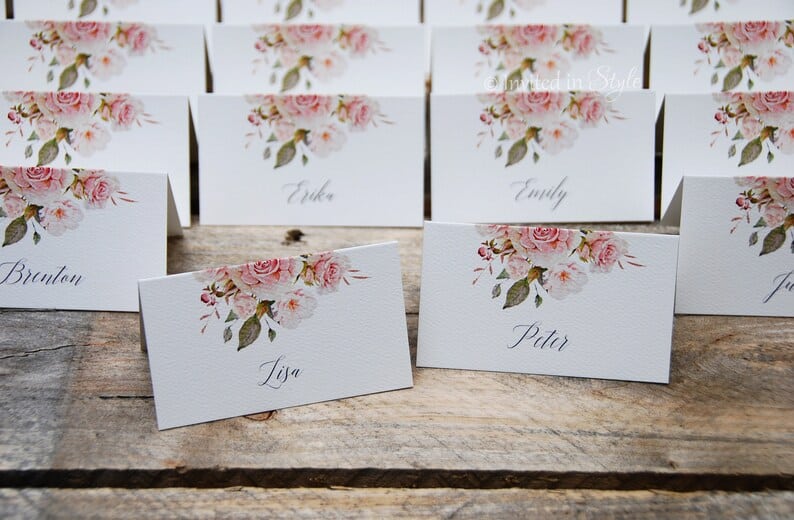
Place cards
Place cards are also cards that have your guest’s name upon them. These cards are placed exactly at the tables where you would like your guest to sit for your reception. They are used for more formal weddings, but once again, there are no limits regarding what they look like.
If you’re having a plated meal at your wedding, the place cards will show the servers what meals to bring where. They can be subtly marked or shaped in a certain way that shows a fish meal here, a chicken meal there, etc.
Brides have used place cards which are as simple as folded card stock, a single flower with a card attached, or a balloon with a name upon it tied to a chair. Others have chosen more elaborate place cards such as individual bouquets, gift boxes, or personalized placemats.
Read more about ‘what is the difference between escort cards and placecards.’

A seating chart
This lists the names of the people at each table on a large sign. It’s often used to see who is sitting with who, as well as being a map of where to find your table at a large venue.
The seating chart can be presented in many ways and there are pros and cons for each type. There are many different seating plans. They are usually organized alphabetically by last name, or by table number so guests can easily find their names.
Give your guests plenty of time to peruse the seating chart so when it’s time for dinner there is no mad scramble to find their seats. Placing the seating chart nearby in the cocktail hour in your wedding is a great opportunity to have it on display for a long period of time.
If you can avoid putting it too near the entry door of your reception area then you can ensure there is no bottleneck happening of guests stopping to look and blocking the door.
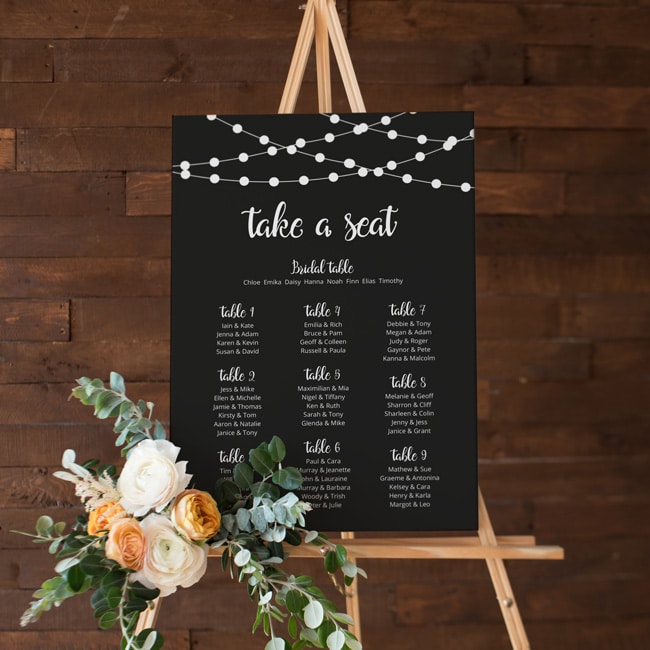
Action steps to take
You can use one of the above lists, a combination of 2, or even all three! It will depend on your personal choice, your wedding budget, and the size of the wedding.
Here are some action steps to take to plan your wedding seating –
- Get a floor plan from the venue. This is going to show you how many tables you can fit. In that regard, you’ll also need to get…
- The size of the tables! And work out how many people does each table fit
- Grab the size of the cake table, dance floor and buffet table too.
- Find software for seating charts. There are a lot of great apps and software out there for seating planning help, such as Wedding wire or Allseated.
